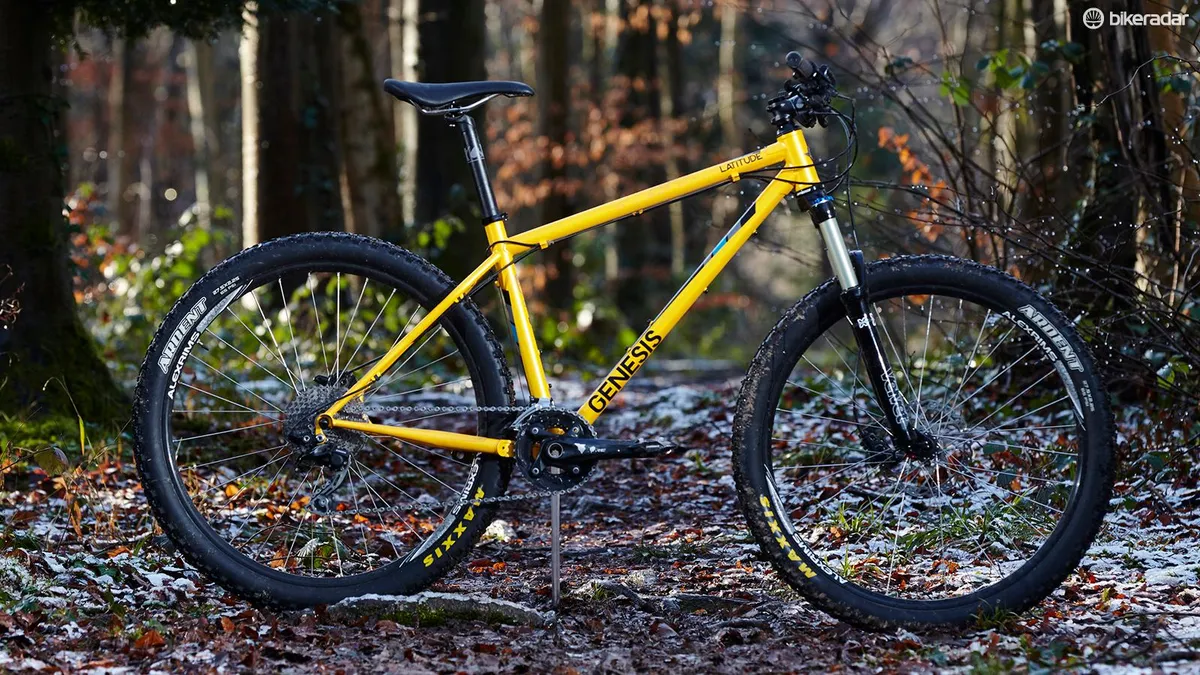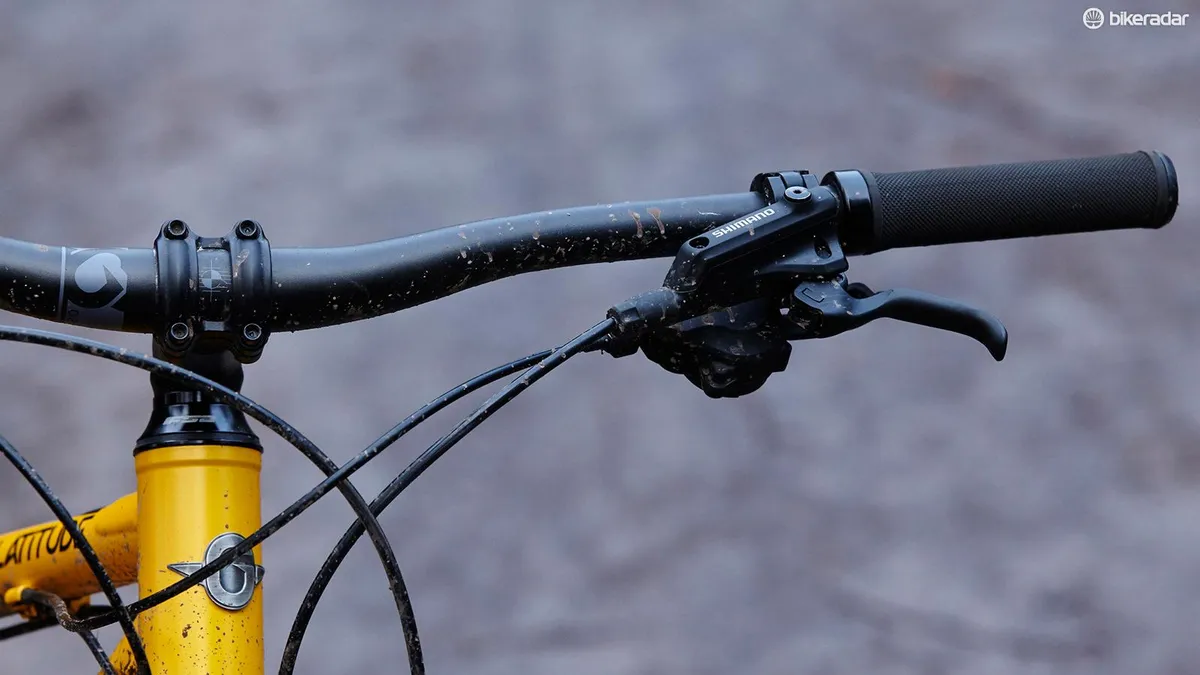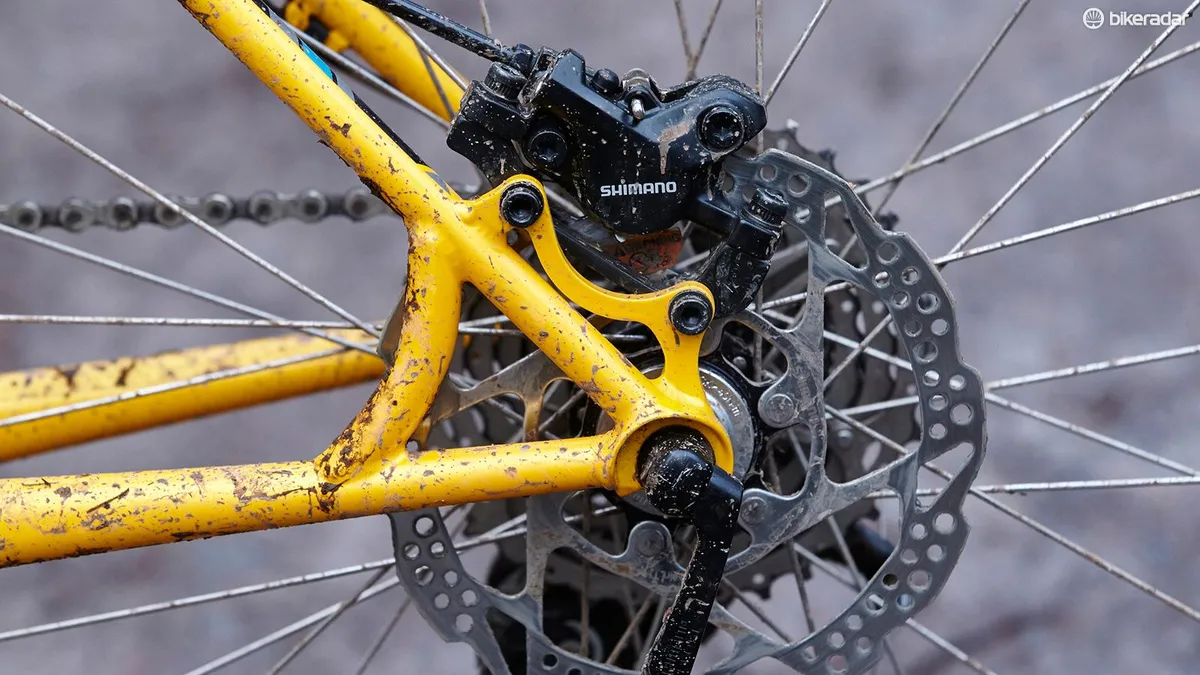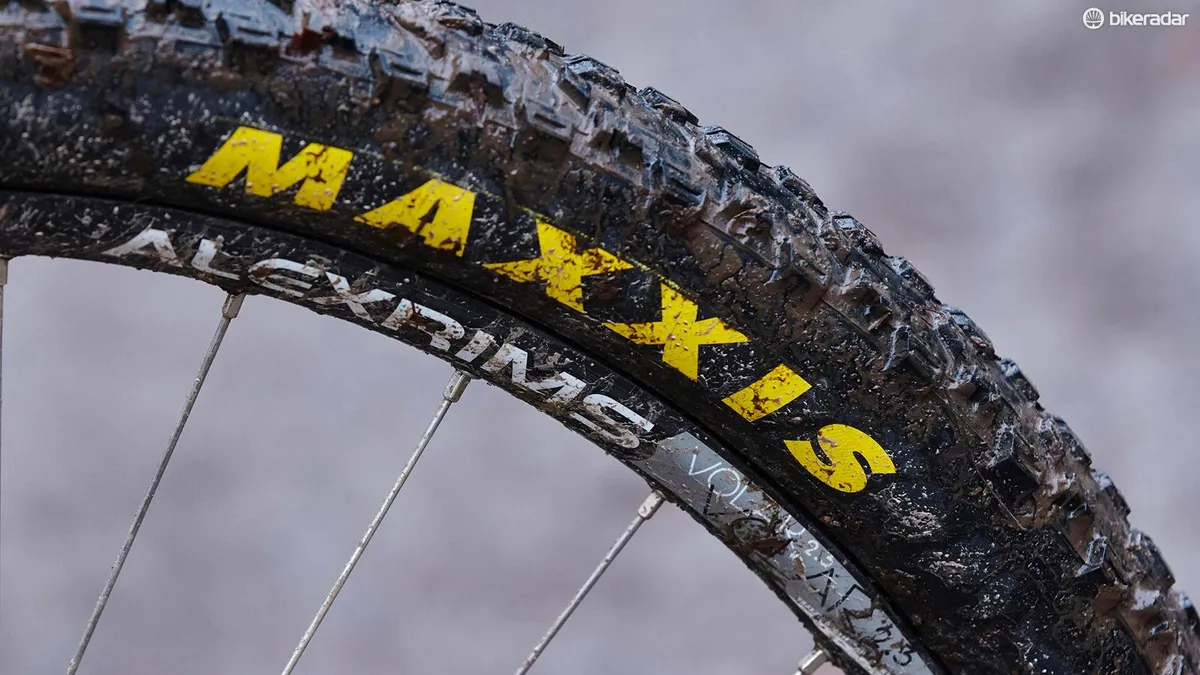Genesis’s line of 650b hardtails tops out with the Latitude 20, which stands apart from its peers by virtue of its steel, rather than alloy, chassis. A full complement of Shimano Deore components provides the 2x10 motive power and the means to bring it all to a halt, while X-Fusion’s 120mm (4.7in) travel Velvet fork makes a refreshing change from the RockShox norm. The question is, can steel still cut it… and is the fork any good?
Frame and equipment: unfussy selection with a few unexpected touches
Back when boys were boys and jumpers were used for goalposts, steel was pretty much the only game in town for bike building. Once the bike industry had figured out how to build strong, light and durable alloy frames though, steel fell out of favour. That’s a shame, because it has a lot going for it. In particular, ferrous frame fans cite the tubing’s comfortable ride (compared with many alloy frames) as a good reason to stick with steel.
Genesis used to make extensive use of Reynolds’ well-regarded tubesets for their steel MTB frames, but in place of the Midlands manufacturer’s familiar logo is an unfamiliar “Mjölnir” sticker. It means “Thor’s hammer”, apparently, and it’s Genesis’s own take on the kind of double-butted seamless chromoly tubing that specialist brands like Reynolds often supply… only cheaper.
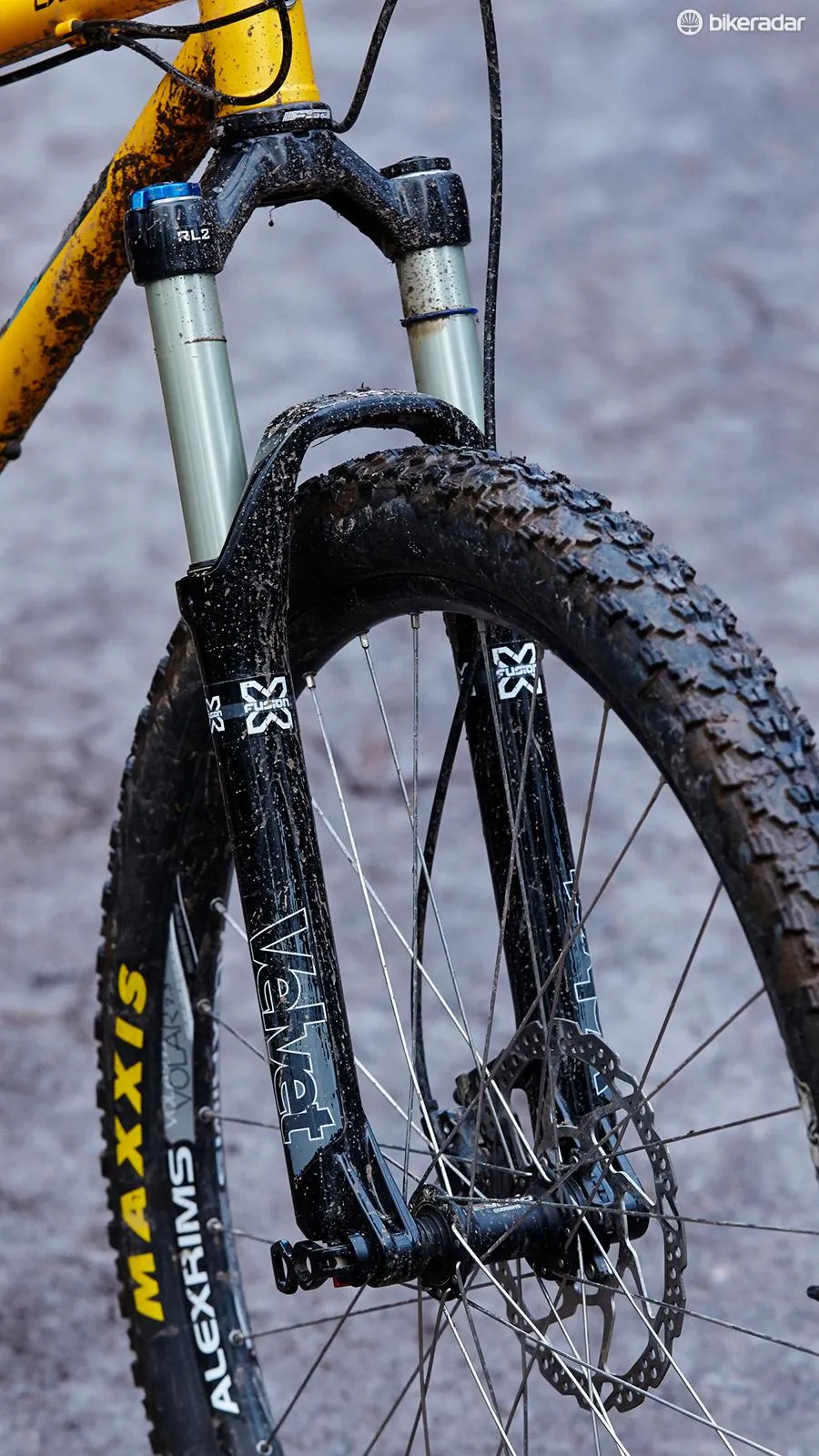
X-Fusion’s Velvet fork is a decent performer, but can’t match the test benchmark set by RockShox’s Revelation
Whatever the source of the pipework, it’s put together thoughtfully. The 44mm head tube means you can plug just about any fork in there. It also provides a strong, rigid anchor for everything behind the fork, and it’s backed up in the strength stakes by a pair of open-ended gussets to reinforce the top and down tubes. There’s a set of Crudcatcher bosses under the down tube and a neat driveside plate linking the chainstays to the bottom bracket for extra mud and chainring clearance.
X-Fusion’s Velvet fork is an interesting alternative to the ubiquity of RockShox’s offerings at around this price. It ticks all the right boxes, offering a tapered steerer, 15mm axle and an air spring with adjustable compression and rebound damping.
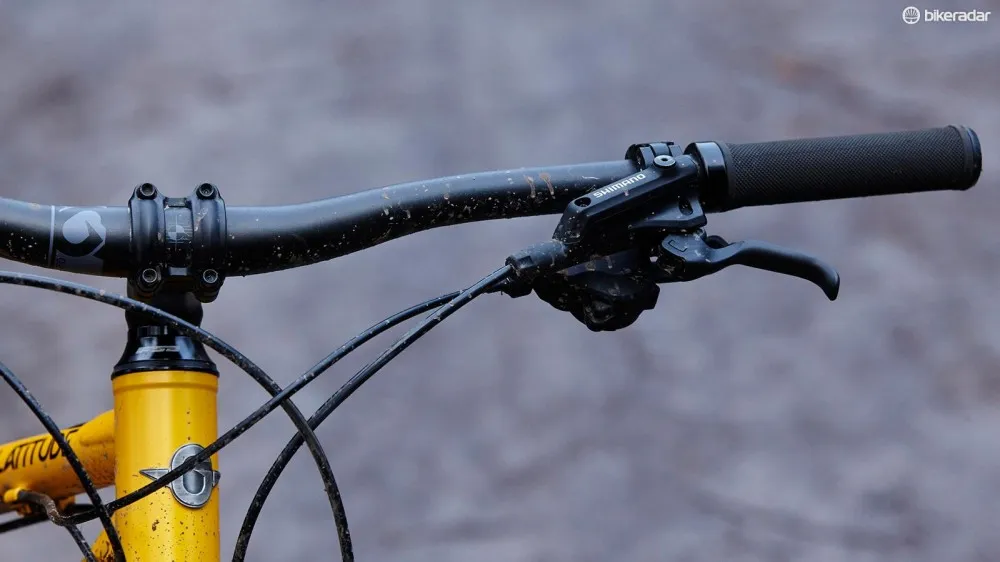
Shimano’s I-Spec shifters and brake levers mount to a single clamp, giving the Latitude’s handlebar a clean appearance
Functionally speaking, a 2x10 Deore transmission is all you’re ever likely to need. The I-Spec shifters and brake levers mount to a single clamp – a nice touch that keeps the bar area uncluttered – while own-brand finishing kit takes care of rider contact points in a straightforward, if unglamorous, way. Tubeless ready rims make it easy to ditch at least some of the rubber, while Maxxis’s Ardent treads are bigger and floatier than their nominal 2.25in width might suggest.
Genesis lists a 27.2mm seatpost on its website, but in fact it’s 30.6mm. That’s bad news for comfort – slimmer posts tend to flex more – but good news if you want to run a dropper, though you’ll need some nifty cable tie bodging to run a cable to a handlebar mounted remote lever.
Ride and handling: geometric tweaks but fun factor remains
The Latitude has been around a little while, which means early incarnations wore 26in wheels. The move to bigger hoops has meant a bit of geometry shunting to accommodate more rubber. Luckily, all the things that made earlier Latitudes fun on the trail have survived the wheel size change intact.
Genesis’s experience with trail hardtails shows through in the fantastically balanced geometry, which pulls off the neat trick of feeling as though the wheels are hard-wired to your brain. Spot a line and you’ll quickly find yourself on it, with no apparent effort.
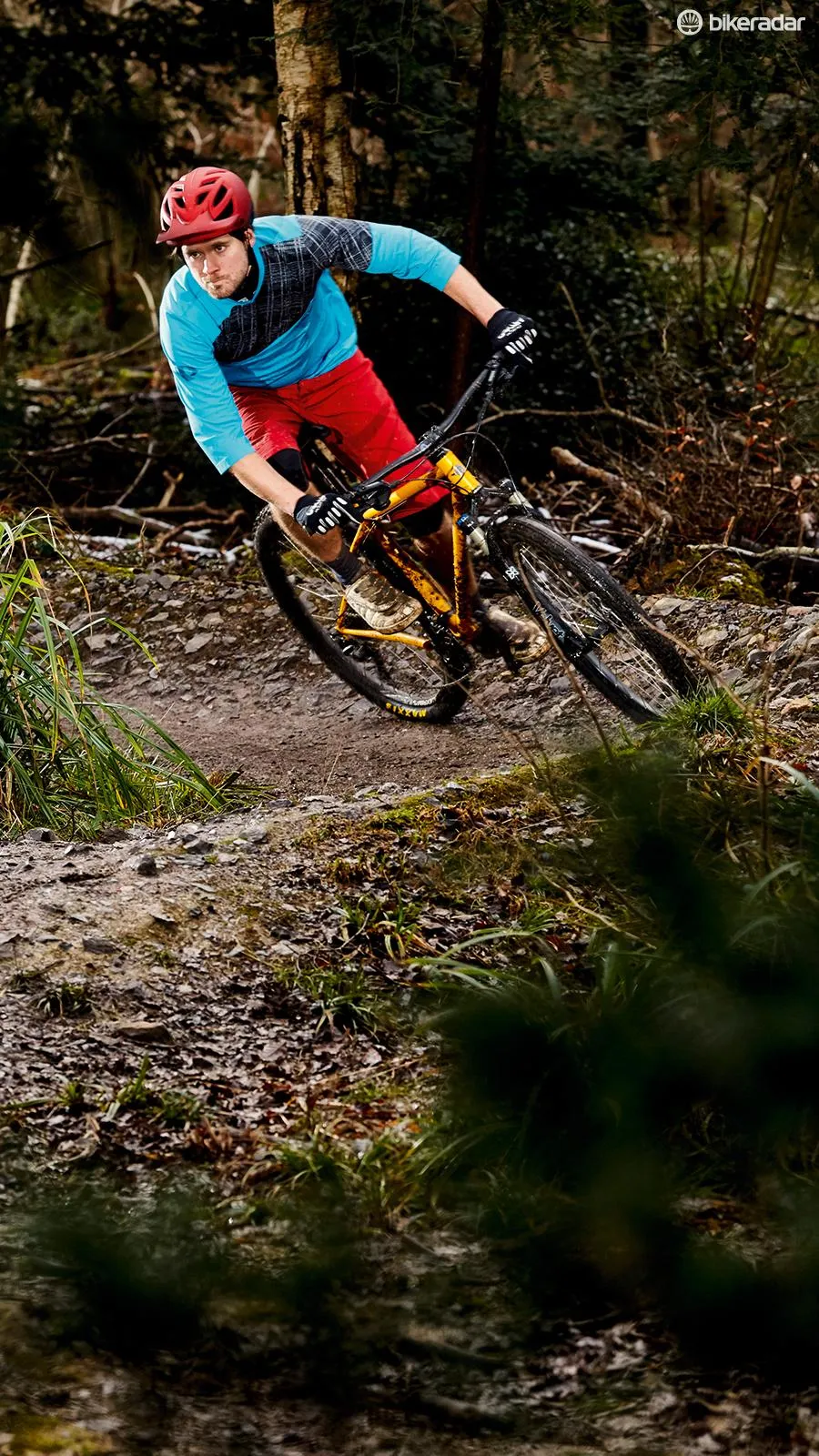
The spot-on geometry combines safe speed with fast-handling fun
The Latitude feels stable at speed, but the front end is still easy to pick up and place at will. The big wheels and chunky rubber blend easy rolling with a dose of the flickable fun that characterised the 26in version. And this is all served up with an added dose of steel-framed resilience that sets the Genesis apart from the mainstream competition. Noticeably less harsh than most alloy hardtails, the Latitude skips its way through the rough stuff with a nonchalance that’s inspiring.
If there’s a weak link in the chain, it’s the X-Fusion fork. While it’s easy to set up, steers accurately and copes well as speeds increase, it never quite matches the benchmark set by RockShox’s Revelation for all round competence. It’s by no means a bad fork and we don’t regard this as a deal-breaker – especially as the Revelation generally comes on bikes costing a couple of hundred quid more – but there’s no doubt that the Latitude’s superb handling would be even better with a different bump eater plugged into the front.
